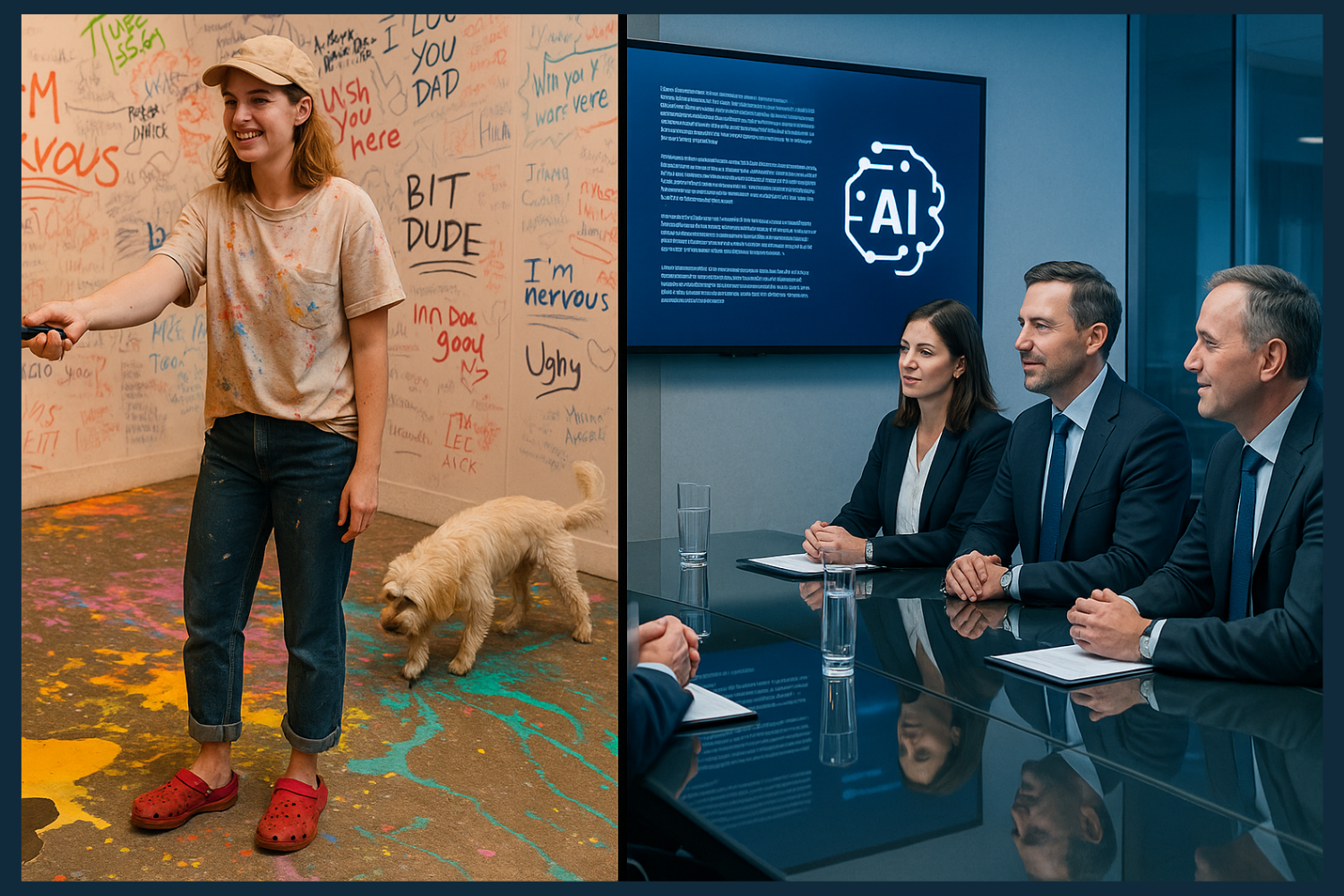So boom: you walk into this “feel-something” pop-up and first thing you hit is a floor that’s half confetti, half sticky latte puddle. No joke, the welcome mat LITERALLY says “spill here.” A brand helper (looks twelve, wearing paint-splattered Crocs) chucks you a neon marker and says, “Write the last text you regret.” People scribble cringe break-up lines straight on the drywall—tears, LOLs, whatever.
Why all the chaos? Easy: perfect feeds are dead-boring. Every scroll’s the same glossy skin, same copy-and-paste inspo quote. So now sneaker drops come pre-scuffed, skincare ad show zits un-blurred, and cereal brand low-key boosted sales by posting real customers’ breakfast disasters (“milk first 😱”). The messy stuff feels human-human, not robot-perfect.
Gen Z and even us tired xennials are eating it up. We want proof somebody sweated, tripped, maybe ugly-cried making the thing we buy. Brands know it, so they’re slapping “imperfection guaranteed” on packaging like it’s a badge of honor. Cue burnt-cookie commercials, typo-packed captions, and #NailedIt-style launch parties where the cake is SUPPOSED to collapse. Imperfect = authentic = 📈.
Bottom line? Companies figured out that in a world drowning in flawless AI content, the fastest way to look real is to lean hard into the mess. Spills, cracks, raspy voices, raw feels—put it on display and watch the likes roll in.
The Clean, Cold Truth
Everything above—every “spill,” every intentional typo—was generated by artificial intelligence. This system can sprinkle slang, drop punctuation, even fake nervous laughter on command. It reliably simulates human wobble because messy now reads as trustworthy, and brands crave trust.
As language models grow more sophisticated, the difference between genuine imperfection and algorithmic theater will shrink to nearly zero. Marketers will manufacture flubs, influencers will outsource “authenticity,” and audiences will struggle to separate soul from script.
So when a campaign proudly flaunts its cracks, pause. Ask: Is this a real reflection of human vulnerability, or a meticulously coded performance? The future of authenticity may depend on how sharply we keep that question in focus.

